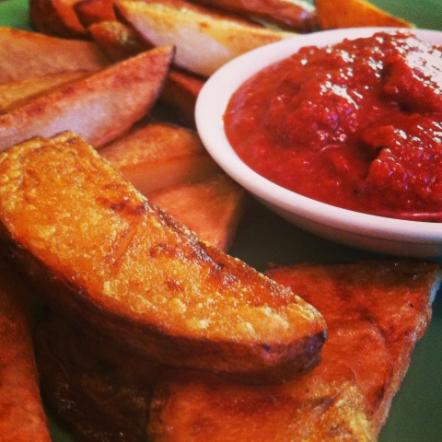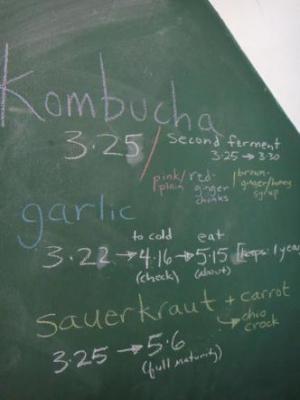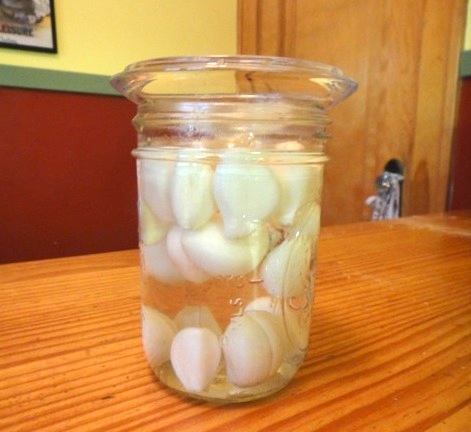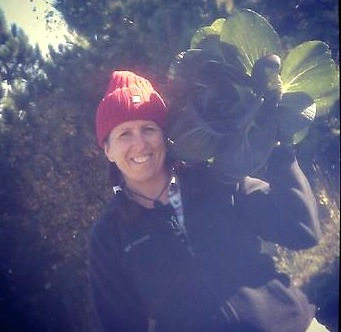This is the sixth post in a SGT series that looks at CSA -- community supported agriculture -- from the farmer's perspective. Also check out earlier posts: Adventures in Farming, Managing Expectations, Crop Planning, Add-On Partnerships, and Farmer-to-Member Communications.
Unless a CSA farm is hit by natural disaster or crop loss, it usually produces a bounty of vegetables, herbs, and fruits during the growing season. As I discussed in Adventures in Farming, the season follows a bell curve, with a modest amount of produce in the first few CSA boxes, and then an increasing amount throughout the summer until the big boom near the end of July and beginning of August, then a tapering off in September.
For some first-time members especially, getting a 30-pound box of produce in the middle of a busy summer is something they dread more than celebrate, particularly if they have limited cooking and preserving skills. Because of this, there's always the fear of waste, and it's an anxiety we hear about often. Some people hesitate to sign up for CSAs because they envision a summer of molding veggies in the fridge, followed by a tsunami of guilt. (For a CSA member’s take on how to use this abundance, check out Jeni Hill’s SGT series Farm to Fork, and especially her post on preventing CSA waste, Too Busy to Cook.)
We get that, because as farmers, we certainly wouldn't be happy to know that all our efforts ended up in the trash. But there's a way to take on a CSA membership without fretting about too many vegetables, and it starts with planning how to use the CSA abundance before the season reaches full boil. Members have to think ahead, and to help them, we include a number of resources in our newsletters and on our Facebook page. Here's a sampling of the tips we give our members before and during the season:
 Photos of simple dishes -- like these potatoes from the farm and homemade ketchup from our tomatoes -- are designed to inspire CSA members and emphasize quick cooking
Photos of simple dishes -- like these potatoes from the farm and homemade ketchup from our tomatoes -- are designed to inspire CSA members and emphasize quick cooking
Recipes and Book Recommendations
In our CSA newsletters, we often include links to recipes, but this year we're also bringing on a recipe writer (who will be chosen soon from a number of applicants) who will create seasonal recipes tailored to a weekly CSA share box. The writer will create adaptable, beginner-level recipes that aren't lengthy and don't require frequent trips to the grocery store.
For example, last year we made a pesto from whatever greens we had handy; one week I combined pea shoots, almonds, and mozzarella, while the next week I threw together basil, spinach, and Parmesan. Both combinations worked well as a pesto over noodles and on sandwiches, but they didn't follow the format of a traditional recipe, they simply operated on some basic principles of oil + greens + savory ingredients. The recipe writer will take this idea of using basic formulas and expand on it, so that members can be more flexible in how they approach dishes, rather than feeling wedded to a specific list of must-have ingredients.
We also include book recommendations in our member newsletters. Sometimes, it feels like there's a new cookbook released every day. But our favorites are ones that take a looser approach to cooking, allow for plenty of substitutions, and follow the midwestern growing season. Our three favorites are Vegetarian Cooking for Everyone by Deborah Madison, From Asparagus to Zucchini from the Madison Area Community Supported Agriculture Coalition, and Eat More Vegetables from local writer Tricia Cornell.
 By spending the winter trying fermentation projects, I can talk to members about preservation more easily
By spending the winter trying fermentation projects, I can talk to members about preservation more easily
Pickle, Dry, and Ferment
Preservation is a major part of CSA planning, and we always try to emphasize that "putting up" food doesn't mean a major weekend-long production. Before I started canning and fermenting, I always imagined both processes as intensive activities that took up every inch of counter space and every spare moment of my free time. Then I made sauerkraut in 15 minutes and canned up a couple jars of refrigerator pickles in 20 minutes and thought: Well, I guess I'll have to find something else to fill up the rest of my Saturday.
Although it can make sense to take on major canning sessions now and then (here are some tips for how to host a home canning party), prserving food in small batches is far easier in the heart of the season. We employ a variety of preservation methods, likee drying peppers in a food dehydrator, vacuum sealing blanched eggplant slices before freezing them, and pickling a couple cucumbers whenever there's a chance.
For members, we emphasize this quick-and-easy approach as well, encouraging them to create pasta sauce from extra tomatoes because it freezes so nicely, or giving tips on quick pickling for everything from radishes to garlic. We also provide long-term storage tips on hardy crops like carrots and cabbages, which can be kept for months if stored properly.
Even with a flurry of cooking and canning, it's likely that some produce might find its way to the back of the fridge, unloved and neglected. In that case, we make sure to let members know how to start a compost pile, or we encourage them to contribute to a neighbor's compost. Enriching soil for another growing season is always important, and it knocks the guilt level down to nil.
 Even garlic can benefit from fermentation -- this batch took me about five minutes to prepare
Even garlic can benefit from fermentation -- this batch took me about five minutes to prepare
Encouraging a Sense of Adventure
Even though we provide our members with a bounty of ideas and resources, not every CSA farmer does that same, and that's understandable. As one of the most time-consuming and complex farming strategies, CSA farming boasts a notoriously long "to do" list of farm tasks for farmers. Although we manage to find the time to inform members of storage and cooking strategies for their vegetables, and also to keep in touch during the season to gauge produce consumption levels, it's ultimately up to each member to take charge of their own planning.
It’s important to emphasize the member’s role, because we often hear general grumbling (not from our members, but online and in conversations) from people who get annoyed by how much a CSA might yield, and sometimes there's an implication that the farmer is responsible when vegetable waste occurs. But that reaction is like getting angry at a grocery store for allowing you to buy too much, or for not handing out recipe books at the exit.
In many ways, using CSA vegetables without a sense of dread comes down to attitude. Seeing the season as an adventure rather than a chore is often what sets happy members apart from overwhelmed ones. We do our best to encourage that sense of adventure, and provide resources to bolster enjoyment and minimize waste at the same time.
In the next installment of Behind the CSA Box, I'll discuss how we're getting ready for the season by digging into greenhouse work. Until then, enjoy the spring and stay bossy!

Elizabeth Millard owns Bossy Acres with her partner, Karla Pankow. They grow an array of delicious vegetables in Northfield, using sustainable and organic methods. Their CSA is sold out, but they'll be at the Mill City Farmers Market in May, and offering vegetables through Twin Cities Local Food during the season. Follow them on Facebook and on Twitter at @BossyAcres.

